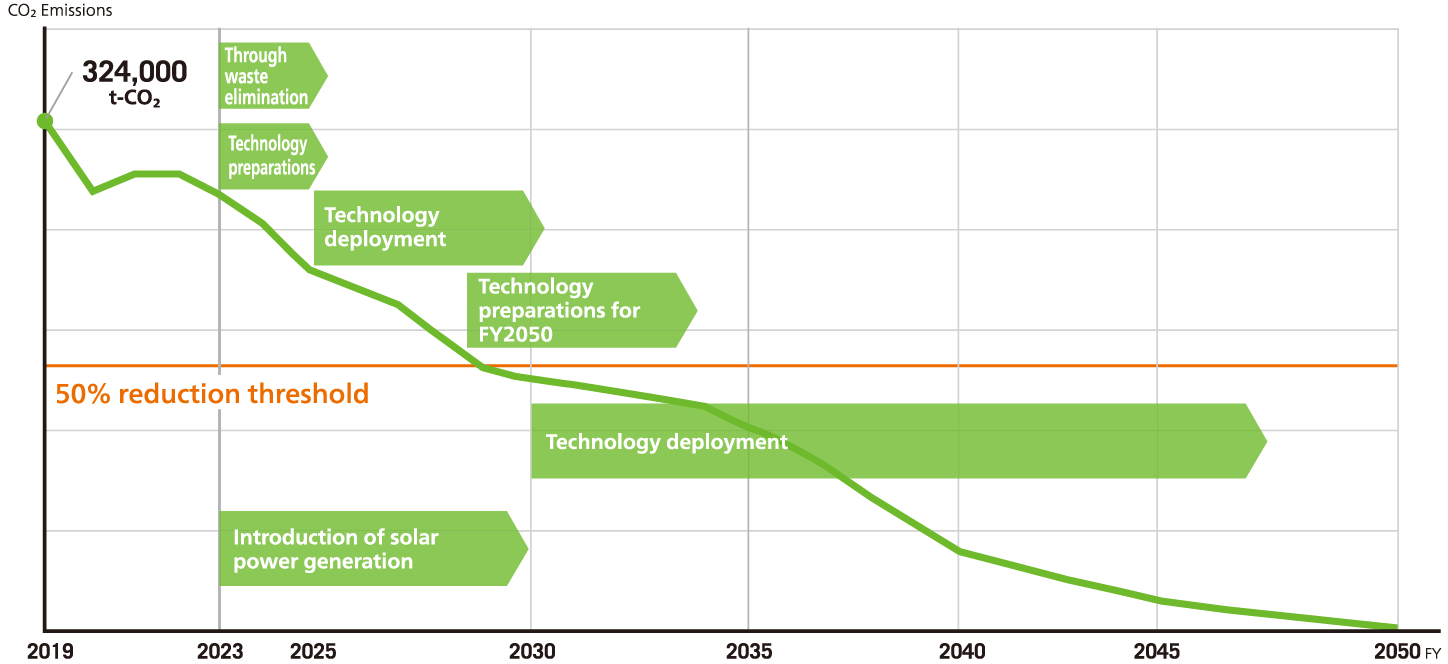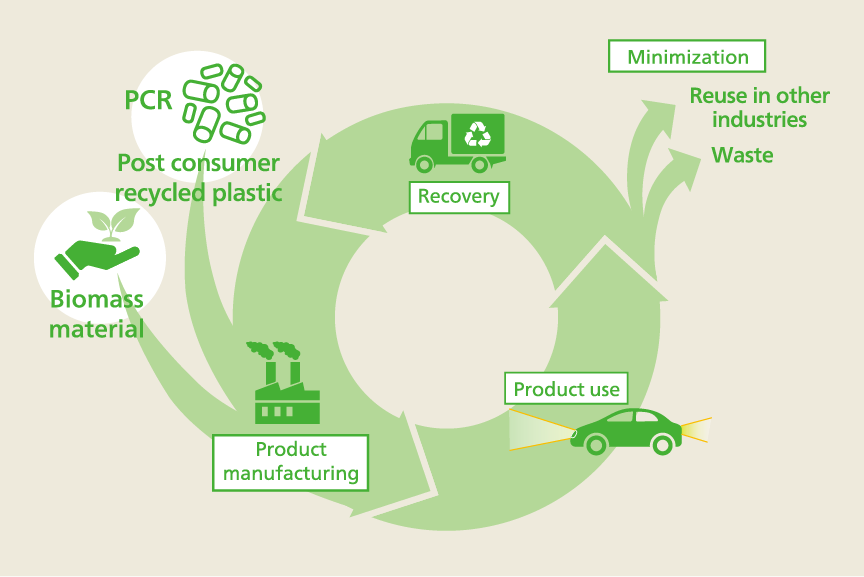Decarbonization and Circular Economy
Realizing a Decarbonized Society
Metrics and Targets
Our Group set the target for FY2021 of “Reducing CO₂ emissions from our business activities by 50% up to FY2030 compared to FY2019 and achieving carbon neutrality up to FY2050.” The result for FY2023 in the index was 287,000 t-CO₂, an 11.4% reduction compared to the base FY2019 result of 324,000 t-CO₂. We are also working on developing a roadmap for reduction by FY2050.
Targets related to climate change (base FY2019)
| Metric | Target | |
|---|---|---|
| Scope1,2 Amount of CO₂ emissions from our business activities | FY2030 50% reduction | FY2050 Achieve carbon neutrality |
Roadmap for reducing the amount of CO₂ emissions from our business activities (Scope1, Scope2)

<Basic approach of reducing CO2 emissions>
We are focusing on reducing CO₂ emissions at our production sites, which account for more than 90% of the Group’s CO₂ emissions. One measure in particular that we are focusing on is to improve manufacturing for reducing manufacturing that uses heat. With this, we are aiming to achieve our targets by further accelerating reductions from FY2027 onwards. To reach our goal of achieving carbon neutrality by FY2050, we will dedicate 50% of our R&D efforts to development towards carbon neutrality, and will further advance the practical application of new technologies from 2030 onward.

Efforts to achieve carbon neutrality
Our Group’s initiatives toward becoming carbon neutral have thus far focused on reducing Scope 1 and Scope 2 CO₂ emissions from our business activities. Looking ahead, there will also be a need to address Scope 3, which refers to CO₂ emissions generated from the flow of all processes, including raw materials procurement, logistics and waste. When we calculated our emissions of Group’s Scope 3, we realized that CO₂ emissions from Category ❶ raw materials were the highest. Moreover, out of the raw materials, we first focused on controlling the resin materials that make up 80% of lamps, our core products. The amount of CO₂ emissions for resin was around 500,000 t-CO₂ (in FY2019). Thus, our Group views reducing CO₂ emissions at the resin manufacturing stage a priority issue, and started looking at the practical application of recycled resin as one way to reducing CO₂ emissions. Working together with our suppliers rather than independently is crucial, and we will be focusing on promoting activities for reducing CO₂ emissions to suppliers that have a high level of CO₂ emissions in our supply chain.
Scope3 category
“Green Value Chain Platform” (Ministry of the Environment)
Created using images available on (https://www.env.go.jp/earth/ondanka/supply_chain/gvc/estimate.html)

●figures are Scope3 category
Circular Economy
Initiatives for the Circular Economy
To ensure the continuation of our business activities while reducing our impact on the global environment, we consider it imperative to transition to a Circular Economy (CE)*. In this model, resources are recycled and nothing is wasted. Given that most of the materials used in our Group’s lamp products are petroleum-derived resins, our approach is reusing materials that have fulfilled their purpose in their markets and avoid extracting new resources. Looking ahead, we are aiming to achieve a recycling-oriented society that posses “zero environmental impact,” not only by ourselves but together with our supply chain. We will be setting forth the direction of the CE of our group while taking into account the external environment, and work on developing technologies and products and building schemes that use sustainable resources without any environmental impact, with the aim of horizontal recycling for our lamps.

- A recycling-oriented framework that maximizes the value of existing things by minimizing as much as possible the amount of new resources input or consumed, while designing things and services from the creation stage of economic activities on the premise that they will be recycled and reused.